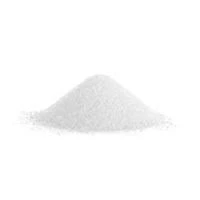
Trends and Factors Influencing Formic Acid Pricing in the Market
Understanding Formic Acid Prices Trends, Factors, and Future Outlook
Formic acid, a colorless liquid with a pungent odor, is one of the simplest carboxylic acids. Its chemical formula is HCOOH, and it is produced both naturally and synthetically. In nature, it can be found in the venom of ants and some plants, but industrially, it is synthesized from methanol or carbon monoxide through various processes. Formic acid is widely used in various applications, including leather production, textile treatment, rubber production, agriculture (as a preservative and acidifier for silage), and as a solvent in the chemical industry. Understanding the pricing of formic acid is crucial for several industries that rely on it.
Current Pricing Trends
Over the past few years, formic acid prices have shown significant fluctuations. Recent prices have been impacted by several factors, including raw material costs, production capabilities, and market demand. As of late 2023, the average price of formic acid has ranged from $1,200 to $2,000 per metric ton, depending on the region and market conditions. This range reflects an ongoing volatility influenced by various economic and environmental factors.
Key Factors Affecting Prices
1. Raw Material Costs The primary raw materials for formic acid production are methanol and carbon monoxide. Fluctuations in global oil prices often affect methanol costs, subsequently influencing formic acid prices. For instance, if crude oil prices rise, this can increase production costs, leading to higher formic acid prices.
2. Production Capacity The level of production capacity in different regions can also impact prices. Regions with high production capacity may benefit from economies of scale, leading to lower prices. Conversely, any disruptions in production due to maintenance, labor shortages, or regulatory changes can lead to supply shortages, driving prices up.
3. Demand The demand for formic acid in various industrial sectors also plays a critical role in shaping its price. For instance, increased demand from the leather and textile industries can raise prices. Moreover, the growing agricultural sector, particularly in Asia, is driving demand for formic acid as a preservative and feed ingredient.
formic acid price

4. Environmental Regulations As global awareness regarding environmental protection increases, stricter regulations on chemical production are being enforced. Compliance with these regulations can result in higher production costs, which may subsequently be passed on to consumers in the form of higher prices.
5. Geopolitical Factors Political stability in major producing countries affects formic acid prices. Trade restrictions, tariff impositions, and geopolitical tensions can disrupt supply chains, leading to price fluctuations.
Market Forecast
Looking ahead, the future of formic acid pricing is uncertain. Analysts predict moderate growth in formic acid demand due to its versatile applications. The expansion of industries such as agriculture and leather production, particularly in emerging markets, is expected to bolster demand. However, potential economic downturns or fluctuations in raw material prices could pose risks to the market.
Furthermore, advancements in production technologies may lead to more cost-effective methods of producing formic acid, potentially stabilizing prices in the long term. Companies might also explore alternative raw materials that could reduce dependency on volatile oil prices.
Conclusion
In conclusion, the pricing of formic acid is influenced by a complex interplay of factors ranging from raw material costs and production capabilities to demand fluctuations and regulatory frameworks. As global industries continue to evolve, monitoring these trends will be essential for businesses that rely on formic acid. Understanding the dynamics of formic acid prices can help stakeholders make informed decisions, manage costs effectively, and align strategies to navigate the challenges and opportunities within this vital chemical marketplace.
-
Pure Sodium Dichloroisocyanurate Dihydrate | Powerful DisinfectantNewsAug.29,2025
-
Industrial Chemicals: Quality & Purity for Every IndustryNewsAug.28,2025
-
Nitrile Rubber Honoring Strict Production StandardsNewsAug.22,2025
-
Aspartame Ingredients Honoring Food Safety ValuesNewsAug.22,2025
-
Fertilizer for Balanced Plant NutritionNewsAug.22,2025
-
Cyanide Gold Processing with High Purity AdditivesNewsAug.22,2025
-
Formic Acid in Textile Dyeing ApplicationsNewsAug.22,2025
Hebei Tenger Chemical Technology Co., Ltd. focuses on the chemical industry and is committed to the export service of chemical raw materials.
-

view more DiethanolisopropanolamineIn the ever-growing field of chemical solutions, diethanolisopropanolamine (DEIPA) stands out as a versatile and important compound. Due to its unique chemical structure and properties, DEIPA is of interest to various industries including construction, personal care, and agriculture. -

view more TriisopropanolamineTriisopropanolamine (TIPA) alkanol amine substance, is a kind of alcohol amine compound with amino and alcohol hydroxyl, and because of its molecules contains both amino and hydroxyl. -

view more Tetramethyl Thiuram DisulfideTetramethyl thiuram disulfide, also known as TMTD, is a white to light-yellow powder with a distinct sulfur-like odor. It is soluble in organic solvents such as benzene, acetone, and ethyl acetate, making it highly versatile for use in different formulations. TMTD is known for its excellent vulcanization acceleration properties, which makes it a key ingredient in the production of rubber products. Additionally, it acts as an effective fungicide and bactericide, making it valuable in agricultural applications. Its high purity and stability ensure consistent performance, making it a preferred choice for manufacturers across various industries.





